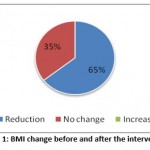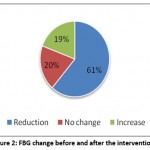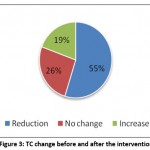Manuscript accepted on : 25-05-2022
Published online on: 31-05-2022
Plagiarism Check: Yes
Reviewed by: Dr. Nilay Nandi
Second Review by: Dr. Francisco Solano
Final Approval by: Dr. Hifzur R. Siddique
Nasser Alqahtani1*  and Amer Alanazi2
and Amer Alanazi2
1Clinical Nutrition Department, Faculty of Applied Medical Sciences, Northern Border University, Arar, Saudi Arabia.
2Clinical Nutrition Department, Northern Medical Tower, Northern Border Directorat of Health Affairs, Ministry of Health, Arar.
Corresponding Author E-mail: nalqahtaniphd@gmail.com
DOI : http://dx.doi.org/10.13005/bbra/2995
ABSTRACT:
Introduction: Prediabetes, diabetes and cardiovascular disease (CVD) are highly prevalent diseases around the world. They cause numerous complications that result in significant morbidity and mortality. Nutrition plays an important role in reducing CVD risk. This study explores potential effects of fasting, fasting-mimicking diets, and time-restricted eating on reduction of CVD risk factors and provides initial data on their potential benefits in CVD prevention and treatment options. Method: This prospective cohort study involed 31 male adult participants. All of them were provided with VLCD meal replacements (OPTIFAST®), and instructed to practice IF 14 hours a day for 4 weeks. The parameters that were measured before and after the intervention were body mass index (BMI), fasting blood sugar (FBS), total cholesterol (TC) levels. Student's T test was utilized to test statistical significance of the results. Results: The average BMI was 38.03 (±SD 4.69) before and 36.19 (±SD 4.26) after the study, but this reduction was not statistically significant. Statistical significance was confirmed in reduction of FBG levels (p=0.0008), with an average value of 7.69 mmol/L (±SD 1.03) before and 7.24 mmol/L (±SD 0.69) after the intervention. TC levels were also significantly reduced (p=0.016), with average values of 277.96 mg/dL (±SD 21.21) before and 272.19 mg/dL (±SD 25.89) after the intervention. Conclusion: IF and FMD might help in prevention of diabetes and cardiovascular diseases. Their impact mostly lies in their effectiveness in weight reduction. More research is warranted in order to fully explore potential health benefits of these diet plans.
KEYWORDS: Cardiovascular Disease; Fasting-Mimicking Diet; Intermittent Fasting; Obesity; Time-Restricted Feeding
Download this article as:| Copy the following to cite this article: Alqahtani N, Alanazi A. Potential Role of Intermittent Fasting and Fasting-Mimicking Diet in Prevention of Diabetes and Cardiovascular Disease. Biosci Biotech Res Asia 2022;19(2). |
| Copy the following to cite this URL: Alqahtani N, Alanazi A. Potential Role of Intermittent Fasting and Fasting-Mimicking Diet in Prevention of Diabetes and Cardiovascular Disease. Biosci Biotech Res Asia 2022;19(2). Available from: https://bit.ly/3N5jT5d |
Introduction
Cardiovascular disease (CVD) and diabetes are global health problems associated with high morbidity rates and early death among the adult population. World Health Organization reported that CVD accounts for approximately 17.9 million deaths annually, while 1.5 million deaths are directly caused by diabetes.1,2 Both diabetes and CVD mostly affect people older than 40 and the risk of developing complications of CVD and diabetes increases with aging.3 The development of CVD is strongly influenced by certain modifiable and non-modifiable risk factors. Modifiable risk factors include diabetes, hypertension, hyperlipidemia, alcohol intake, smoking, sedentary lifestyle, and obesity, while non-modifiable risk factors would be age, gender, and the genetic composition of an individual.4
The prevalence of diabetes and CVD can be drastically reduced by addressing the risk factors.5 They include cessation of smoking, exercising, reducing salt intake, maintaining a healthy diet, limiting alcohol intake, and ensuring appropriate body weight. Body mass index (BMI) higher than 25 is considered to be a significant risk factor for developing prediabetes and type II diabetes mellitus6, as obesity increases insulin resistance. A healthy diet and normal BMI can therefore be considered as primary prevention of CVD and diabetes in the community.
Intermittent fasting is one of the methods that might help in weight control and reduction of excess caloric intake.7 It entails a strict schedule of food intake within a day or a week. There are two types of intermittent fasting diet: time-restricted feeding and alternate-day fasting. Time-restricted feeding is a more popular approach and has several variations of fasting to eating ratio. The most common version uses a ratio of 16:8 (16 hours of fasting and eight hours during which it is permissible to eat). The alternate-day fasting entails fasting for 24 hours followed by a normal diet for 24 hours, two or three times a week. There are two commonly used ways of following the alternate-day fasting approach: 4:3 or 5:2. The 4:3 system means 4 days of caloric restriction with 3 days of regular diet every week. The fasting period in this regard is defined as the consumption of 400-600 kcal per day.
The protocol for the time-restricted feeding (TRF) varies from one individual or lifestyle to another based on personal preferences. However, the fundamental principle of TRF is limiting food intake for at least 6-12 hours. TRF is preferred among those who are physically active because of its benefit of weight reduction with subsequent maintenance of muscle mass.8
Fasting mimicking diet (FMD) was pioneered by Dr. Longo to promote compliance with intermittent fasting.9 The FMD, therefore, replaced simple fasting and encouraged people to adopt it in their lifestyles due to its simplicity and effectiveness. Very Low Calories Diet (VLCD) is a meal plan that is often incorporated in IF and FMD. It restricts food intake to less than 800 kcal per day, but it has to contain the full complement of nutrients such as vitamins, minerals, electrolytes, and fatty acids and it should only be used in weight loss programs for a specific period of time.10 Several recent studies found that IF and FMD might help in weight reduction and control of diseases like diabetes and CVD.11,12,13
Objectives
This study aimed to utilize interventional research to provide preliminary findings of the potential effects of intermittent fasting and fasting-mimicking diet on diabetes and CVD.
Materials and Methods
We conducted a prospective cohort study involving 35 participants. Pre-diabetic male adults aged 20 to 65 with at least one risk factor for developing CVD (high BP, high cholesterol, or obesity) were eligible to participate in this study. Regarding exclusion criteria, patients who were previously diagnosed with chronic diseases, such as ischemic heart disease or heart failure, chronic inflammatory disorders, moderate to severe renal disease, uncontrolled hypertension, etc. were not eligible to participate in the study.
All the patients were provided with VLCD meal replacements (OPTIFAST®), each containing 14 grams of protein, 20 grams of carbohydrates, 220 mg of sodium, and 405 grams of potassium. They were instructed to practice IF 14 hours a day for 4 weeks. Participants were allowed to drink water, coffee, and tea in the fasting window. During the 10 hours long feeding window, they were instructed to follow VLCD with a maximum calorie intake of 800 kcal.
The parameters that were measured before and after the intervention were:
Body mass index (BMI)
Fasting blood sugar (FBS)
Total cholesterol (TC) levels
Students T Test was utilized to test statistical significance of the results.
Results
A total of 31 participants successfully completed the intervention, fully following the provided nutrition regimen. All participants were males, with an average age of 42.9 (±SD 12.4).
The average BMI was 38.03 (±SD 4.69) before and 36.19 (±SD 4.26) after the study, but this reduction was not statistically significant. The percentage of changes in BMI is shown in Figure 1 below.
 |
Figure 1: BMI change before and after the intervention |
Statistical significance was confirmed in reduction of FBG levels (p=0.0008), with an average value of 7.69 mmol/L (±SD 1.03) before and 7.24 mmol/L (±SD 0.69) after the intervention. The percentage of changes in FBG levels is shown in Figure 2 below.
 |
Figure 2: FBG change before and after the intervention. |
Finally, TC levels were also significantly reduced (p=0.016), with average values of 277.96 mg/dL (±SD 21.21) before and 272.19 mg/dL (±SD 25.89) after the intervention. The percentage of changes in TC levels is shown in Figure 3 below.
 |
Figure 3: TC change before and after the intervention. |
The table with raw data of BMI, FBG, and TC levels before and after the intervention is provided in the Appendix.
Appendix 1: Changes in BMI, FBG, and TC before and after the intervention.
| Before | After | |||||
| No | BMI | FBS
(mmol/L) |
Total Cholesterol
(mg/dL) |
BMI | FBS
(mmol/L) |
Total Cholesterol
(mg/dL) |
| 1. | 35 | 7 | 250 | 30 | 6.7 | 239 |
| 2. | 37 | 7.2 | 290 | 35 | 7 | 250 |
| 3. | 42 | 6.4 | 270 | 41 | 6.7 | 270 |
| 4. | 30 | 7 | 260 | 30 | 7 | 260 |
| 5. | 40 | 8.1 | 290 | 35 | 7 | 250 |
| 6. | 37 | 7.5 | 249 | 35 | 7.1 | 240 |
| 7. | 45 | 9.1 | 265 | 40 | 7 | 245 |
| 8. | 41 | 8.5 | 300 | 35 | 7.6 | 280 |
| 9. | 39 | 8.6 | 305 | 37 | 8 | 300 |
| 10. | 42 | 8.9 | 310 | 42 | 8.9 | 315 |
| 11. | 40 | 7.5 | 300 | 40 | 7.6 | 310 |
| 12. | 37 | 6.9 | 270 | 36 | 6.7 | 265 |
| 13. | 42 | 8.9 | 310 | 42 | 8.9 | 315 |
| 14. | 40 | 7.5 | 300 | 40 | 7.6 | 310 |
| 15. | 42 | 6.4 | 270 | 41 | 6.7 | 270 |
| 16. | 30 | 6.4 | 253 | 30 | 6.4 | 250 |
| 17. | 32 | 7 | 290 | 32 | 6.7 | 300 |
| 18. | 35 | 8.1 | 250 | 30 | 6.7 | 239 |
| 19. | 41 | 8.5 | 300 | 36 | 7.6 | 280 |
| 20. | 44 | 7.5 | 300 | 40 | 7.6 | 310 |
| 21. | 30 | 7 | 260 | 30 | 7 | 260 |
| 22. | 33 | 7.2 | 270 | 33 | 7 | 270 |
| 23. | 39 | 8.6 | 305 | 37 | 8 | 300 |
| 24. | 45 | 9.1 | 265 | 40 | 7 | 245 |
| 25. | 37 | 7.5 | 249 | 35 | 7.1 | 240 |
| 26. | 33 | 7.3 | 256 | 33 | 6.9 | 250 |
| 27. | 42 | 6.9 | 270 | 41 | 6.7 | 270 |
| 28. | 45 | 11 | 310 | 44 | 9 | 310 |
| 29. | 37 | 6.9 | 270 | 36 | 6.7 | 265 |
| 30. | 30 | 7 | 260 | 30 | 7 | 260 |
| 31. | 37 | 6.9 | 270 | 36 | 6.7 | 260 |
Discussion
Intermittent fasting and fast-mimicking diet aid in lipolysis that eventually results in loss of excess fats with subsequent reduction in the body mass index13. Several other factors may affect the effect of IF and FMD on the body fat, especially an individual’s specific diet. Use of the interventions above with unhealthy foods may not produce expected results14. It should be noted that in the above results, there is a lack of close and strict monitoring of the participants’ diet components. Therefore, the observation of changes in the BMI for some participants should be interpreted with this information in the back of the mind.
As much as changes in FBG levels might represent a promising result of this study, they are influenced by the meal time, food quantity, and insulin levels15. For this reason, accurate comparison of FBG levels before and after the intervention requires monitoring such parameters for all the participants. It is also important to note that IF and FMD do not result in a significantly good outcome for individuals with existing poorly controlled sugar16, so patients with poorly-controlled blood sugar might not be eligible for these nutrition plans.
Total cholesterol includes high-density lipoprotein (HDL) and low-density lipoprotein (LDL). Liver and intestines produce about 80% of the cholesterol, while about 20% comes from the individual’s diet. Intake of too much-saturated fat or trans fats is one of the leading causes of high total cholesterol in the body. IF and FMD enable the body to utilize the excess fats to release the required energy, resulting in a reduction in the total cholesterol levels in the body17. The reduction of TC that is found in this study is a promising outcome that should be explored in more detail in the future.
However, it is important to remember that the disadvantages of these diet regimens are not without significance. Fasting might be dangerous and should not be recommended for patients with hormonal imbalances, pregnant and breastfeeding women, and patients with diabetes18. Moreover, people with eating disorders and underweight people are also not recommended to follow IF or FMD.
The most important strength of this study is that we organized an experimental prospective research, providing basis for future research of this topic and contributing to the evidence in the field. Regarding study limitations, this was an observational small-sample cohort study, with its well-known restrictions related to interpretation of efficacy.
Conclusion
IF and FMD might help in prevention of diabetes and cardiovascular diseases. Their impact mostly lies in their effectiveness in weight reduction. Both IF and FMD are currently becoming increasingly popular and regarded as effective non-pharmacological treatments for lifestyle diseases. More research is warranted in order to fully explore potential health benefits of these diet plans.
Acknowledgment
“special appreciation to the Deanship of Research, Northern Border University”.
Conflict of Interest
There is no conflict of Interest.
Funding sources
There is no funding source.
References
- World Health Organization. Cardiovascular diseases (CVDs) [Internet]. Who.int. 2021 [cited 20 January 2022]. Available from: https://www.who.int/news-room/fact-sheets/detail/cardiovascular-diseases-(cvds)
- World Health Organization. Diabetes [Internet]. Who. int. 2021 [cited 20 January 2022]. Available from: https://www.who.int/news-room/fact-sheets/detail/diabetes
- Roth GA, Mensah GA, Johnson CO, Addolorato G, Ammirati E, Baddour LM, Barengo NC, Beaton AZ, Benjamin EJ, Benziger CP, Bonny A. Global burden of cardiovascular diseases and risk factors, 1990–2019: update from the GBD 2019 study. Journal of the American College of Cardiology. 2020 Dec 22; 76(25):2982-3021. https://www.jacc.org/doi/full/10.1016/j.jacc.2020.11.010
CrossRef - Yusuf S, Joseph P, Rangarajan S, Islam S, Mente A, Hystad P, Brauer M, Kutty VR, Gupta R, Wielgosz A, AlHabib KF. Modifiable risk factors, cardiovascular disease, and mortality in 155 722 individuals from 21 high-income, middle-income, and low-income countries (PURE): a prospective cohort study. The Lancet. 2020 Mar 7; 395(10226):795-808. https://doi.org/10.1016/S0140-6736(19)32008-2
CrossRef - Ghalmi A. Coronary artery disease severity and risk factors in diabetic patients. Archives of Cardiovascular Diseases Supplements. 2021; 13(1):17. https://doi.org/10.1016/j.acvdsp.2020.10.029
CrossRef - Ozemek C, Laddu DR, Lavie CJ, Claeys H, Kaminsky LA, Ross R, Wisloff U, Arena R, Blair SN. An update on the role of cardiorespiratory fitness, structured exercise, and lifestyle physical activity in preventing cardiovascular disease and health risk. Progress in cardiovascular diseases. 2018 Nov 1; 61(5-6):484-90. https://doi.org/10.1016/j.pcad.2018.11.005
CrossRef - Johnstone A. Fasting for weight loss: an effective strategy or latest dieting trend? International Journal of Obesity. 2015 May; 39(5):727-33. https://doi.org/10.1038/ijo.2014.214
CrossRef - Mattson MP, Longo VD, Harvie M. Impact of intermittent fasting on health and disease processes. Aging research reviews. 2017 Oct 1; 39:46-58.https://doi.org/10.1016/j.arr.2016.10.005
CrossRef - Wei M et al. Fasting-mimicking diet and markers/risk factors for aging, diabetes, cancer, and cardiovascular disease. Science translational medicine. 2017 Feb 15; 9(377).DOI: 10.1126/scitranslmed.aai8700
CrossRef - Harvie M, Howell A. Potential benefits and harms of intermittent energy restriction and intermittent fasting amongst obese, overweight and normal-weight subjects—a narrative review of human and animal evidence. Behavioral Sciences. 2017 Mar;7(1):4, https://doi.org/10.3390/bs7010004
CrossRef - Griffin SB, Ross LJ, Burstow MJ, Desbrow B, Palmer MA. Efficacy of a dietitian-led very low calorie diet (VLCD) based model of care to facilitate weight loss for obese patients prior to elective, non-bariatric surgery. J Hum Nutr Diet. 2021 Feb;34(1):188-198. doi: 10.1111/jhn.12819. Epub 2020 Oct 5. PMID: 33016501.
CrossRef - Farooq J, Ahmed N. Positive Impact of Intermittent Fasting on Cardioprotection. EC Cardiology ECO. 2019; 2:19-21.
- Moro T et al. Effects of eight weeks of time-restricted feeding (16/8) on basal metabolism, maximal strength, body composition, inflammation, and cardiovascular risk factors in resistance-trained males. Journal of translational medicine. 2016 Dec; 14(1):1-0. https://doi.org/10.1186/s12967-016-1044-0
CrossRef - Freire R. Scientific evidence of diets for weight loss: Different macronutrient composition, intermittent fasting, and popular diets. Nutrition. 2020 Jan 1;69:110549. https://doi.org/10.1016/j.nut.2019.07.001
CrossRef - Potter C, Griggs RL, Brunstrom JM, Rogers PJ. Breaking the fast: Meal patterns and beliefs about healthy eating style are associated with adherence to intermittent fasting diets. Appetite. 2019 Feb 1;133:32-9. https://doi.org/10.1016/j.appet.2018.10.020
CrossRef - Ridwanto M, Indarto D, Hanim D. Factors affecting fasting blood glucose in patients with type 2 diabetes mellitus. International Journal of Nutrition Sciences. 2020 Mar 1;5(1):13-8.doi 10.30476/IJNS.2020.84492.1048
- Santos HO, Macedo RC. Impact of intermittent fasting on the lipid profile: Assessment associated with diet and weight loss. Clinical nutrition ESPEN. 2018 Apr 1;24:14-21.https://doi.org/10.1016/j.clnesp.2018.01.002
CrossRef - Malinowski B et al. Intermittent Fasting in Cardiovascular Disorders-An Overview. Nutrients. 2019 Mar 20;11(3):673. doi: 10.3390/nu11030673.
CrossRef

This work is licensed under a Creative Commons Attribution 4.0 International License.





